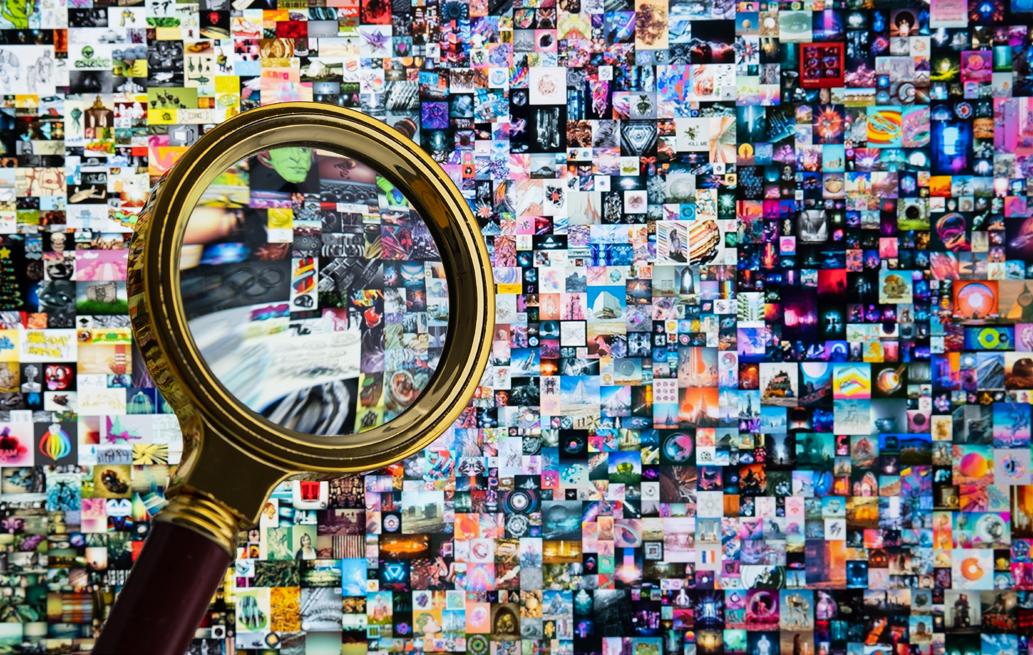
4 minute read
Article NFT For Sale
NFTs : MONEY OR MAGIC BEANS ?
Words By Chris O'Shea | June 15th 2021
Advertisement
Before you start reading, I need to come clean about something: This article isn’t real. You can still read it, but it’s a fake. The original is scribbled down, in biro, on the back of a pair of plane tickets I printed out last week. This article is just a typed up copy of that one. They weren’t the original plane tickets either. The originals were sent to me as PDFs in an email- and even they were just digital representations of the idea that, in about a week, I’m allowed to get on a plane. If you want the one, genuine, original, article, I can sell it to you. How will you know it’s the original? I’ll give you the NFT.
“How much??” “$69 million, dad.” “Yeah, I read about it in the paper, actually. People who throw their money away like that should have it taken away from them and given to a good cause.”
The well enunciated East-London accent you just read belongs to my father. Dad was in the meat trade in London and was born in 1939. I decided last week I’d try and explain NFTs to him for a laugh. I told him about the digital artist “Beeple,” who had just sold the NFT for his work ““Everydays - The First 5000 Days” for $69 million.
“I think it’s a load of old nonsense. It’s a scam, to my mind.”
I realize this has been done. Twitter is full of the well-thumbed accounts of people whose dads come out with their takes on modern life; some are hilarious, some thought provoking... and yes, some are racist. They’re almost all interesting, though; there’s a reason this is a trend. There’s something about asking the 1930’s what it thinks of 2021 and getting an answer.
Not to get too technical, but NFTs were made possible by the same Blockchain software that enables the creation of cryptocurrencies like Bitcoin. Bitcoin relies, for its value, on there being a finite number of Bitcoins and an accurate record of who owns them. The Blockchain is that record. Previously, owning a digital “object” was a bit like trying to write your name on a puff of smoke. The Blockchain ensures that, no matter how many times something is copied and shared, there will always be a record of who owns the “original.”
In case you haven’t heard: NFTs are all the rage. They’re like digital certificates of authenticity. A music track can have one, a video clip, a tweet... an article about NFTs. A digital tag can be produced that proclaims this the one, authentic...thing that it is. Ownership of these tags confers on the bearer no rights at all: The owner of the NFT for a song cannot use that song in a movie, or profit from that song on Spotify, without separately obtaining the copyright. Similarly, the “owner” of the NFT for a piece of digital art can’t order the piece taken down. In other words an NFT is like a baseball card. It’s something you just “have.”
So, back to Beeple. Let’s say you buy a pen; you get to decide who uses it and for how long, you can sell it or destroy it. The pen’s physical existence gives you control. Control is what ownership is to generations brought up without digital stuff. When it comes to NFTs, vast wealth has been handed over and no control has been acquired at all. To my dad, this might as well be Jack buying his Magic Beans.
The buyers of NFTs see things differently, though. A few are probably wealthy collectors. The types who, possessed of vast quantities of both money and time, have retired from real life and now just compete with each other over the acquisition of “rare things”- it wouldn’t surprise me to learn that the guy who bought the Beeple piece, also has a room full of vintage cars, priceless yachts and performance aircraft.
There is another type of buyer: The Investor. This individual (and/or hedge fund) has looked at NFTs and seen the future. They’re buying now because they believe that, eventually, $69 million will be cheap. They have looked at the future and seen a digital world. A world where physical currency is a thing of the past and digital art is as real, and valuable, as physical art. It’s an expensive bet, but the emergence of The Blockchain is a step toward that future. You can see this bet playing out in the volatility of cryptocurrency. People flock to BitCoin and DogeCoin, looking to invest in the future, but flee from it just as quickly. Investors are nervous. Like my dad, a lot of people don’t believe in the reality of digital “stuff.” They’re worried that the bubble will burst. That, eventually, someone will say “the Emperor has no clothes” and we’ll all look at our digital wallets, full of digital currency and realize we’ve been taken for a ride.
If NFTs are a scam, then so are the dollars used to buy them. Physical currency relies on confidence just as much as digital. For me, digital art and currency are the future. That’s why I’m investing the 30 billion Dogecoins I’m getting for this NFT, in the first Jamba Juice on Mars. Elon’s going, the rest is a matter of time. ■










